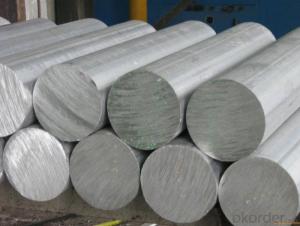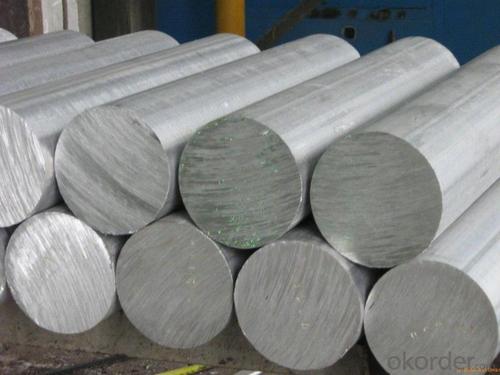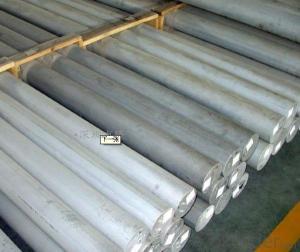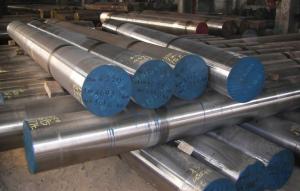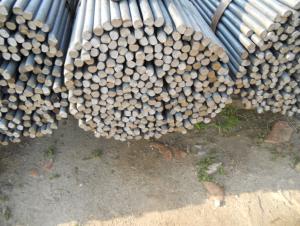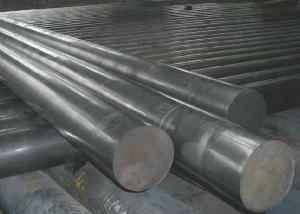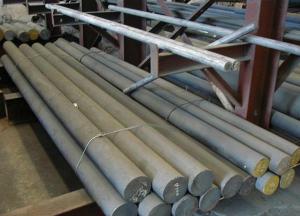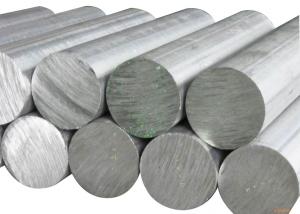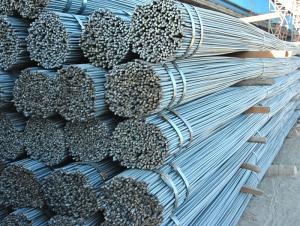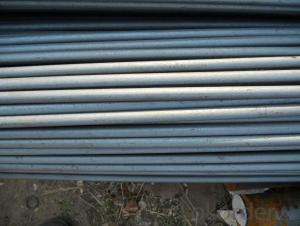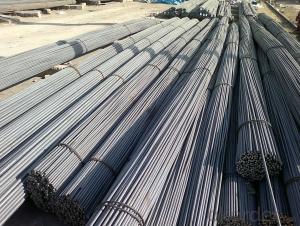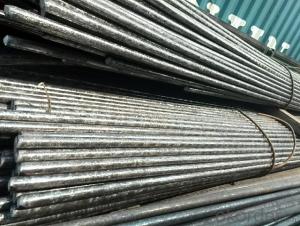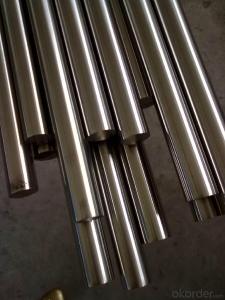Special Steel Round Bar
- Loading Port:
- China Main Port
- Payment Terms:
- TT or LC
- Min Order Qty:
- -
- Supply Capability:
- -
OKorder Service Pledge
OKorder Financial Service
You Might Also Like
Product Description:
OKorder is offering Special Steel Round Bar at great prices with worldwide shipping. Our supplier is a world-class manufacturer of steel, with our products utilized the world over. OKorder annually supplies products to European, North American and Asian markets. We provide quotations within 24 hours of receiving an inquiry and guarantee competitive prices.
Product Applications:
Special Steel Round Bar are ideal for structural applications and are widely used in the construction of buildings and bridges, and the manufacturing, petrochemical, and transportation industries.
Product Advantages:
OKorder's Special Steel Round Bar are durable, strong, and resist corrosion.
Main Product Features:
· Premium quality
· Prompt delivery & seaworthy packing (30 days after receiving deposit)
· Corrosion resistance
· Can be recycled and reused
· Mill test certification
· Professional Service
· Competitive pricing
Product Specifications:
Manufacture: Hot rolled
Grade: Q195 – 235
Certificates: ISO, SGS, BV, CIQ
Length: 6m – 12m, as per customer request
Packaging: Export packing, nude packing, bundled
Chinese Standard (H*W*T) | Weight (Kg/m) | 6m (pcs/ton) | Light I (H*W*T) | Weight (Kg/m) | 6m (pcs/ton) | Light II (H*W*T) | Weight (Kg/m) | 6M |
100*68*4.5 | 11.261 | 14.8 | 100*66*4.3 | 10.13 | 16.4 | 100*64*4 | 8.45 | 19.7 |
120*74*5.0 | 13.987 | 11.9 | 120*72*4.8 | 12.59 | 13.2 | 120*70*4.5 | 10.49 | 15.8 |
140*80*5.5 | 16.89 | 9.8 | 140*78*5.3 | 15.2 | 10.9 | 140*76*5 | 12.67 | 13.1 |
160*88*6 | 20.513 | 8.1 | 160*86*5.8 | 18.46 | 9 | 160*84*5.5 | 15.38 | 10.8 |
180*94*6.5 | 24.143 | 6.9 | 180*92*6.3 | 21.73 | 7.6 | 180*90*6 | 18.11 | 9.2 |
200*100*7 | 27.929 | 5.9 | 200*98*6.8 | 25.14 | 6.6 | 200*96*6.5 | 20.95 | 7.9 |
220*110*7.5 | 33.07 | 5 | 220*108*7.3 | 29.76 | 5.6 | 220*106*7 | 24.8 | 6.7 |
250*116*8 | 38.105 | 4.3 | 250*114*7.8 | 34.29 | 4.8 | 250*112*7.5 | 28.58 | 5.8 |
280*122*8.5 | 43.492 | 3.8 | 280*120*8.2 | 39.14 | 4.2 | 280*120*8 | 36.97 | 4.5 |
300*126*9 | 48.084 | 3.4 | 300*124*9.2 | 43.28 | 3.8 | 300*124*8.5 | 40.87 | 4 |
320*130*9.5 | 52.717 | 3.1 | 320*127*9.2 | 48.5 | 3.4 | |||
360*136*10 | 60.037 | 2.7 | 360*132*9.5 | 55.23 | 3 |
FAQ:
Q1: Why buy Materials & Equipment from OKorder.com?
A1: All products offered byOKorder.com are carefully selected from China's most reliable manufacturing enterprises. Through its ISO certifications, OKorder.com adheres to the highest standards and a commitment to supply chain safety and customer satisfaction.
Q2: How do we guarantee the quality of our products?
A2: We have established an advanced quality management system which conducts strict quality tests at every step, from raw materials to the final product. At the same time, we provide extensive follow-up service assurances as required.
Q3: How soon can we receive the product after purchase?
A3: Within three days of placing an order, we will begin production. The specific shipping date is dependent upon international and government factors, but is typically 7 to 10 workdays.
Q4: What makes stainless steel stainless?
A4: Stainless steel must contain at least 10.5 % chromium. It is this element that reacts with the oxygen in the air to form a complex chrome-oxide surface layer that is invisible but strong enough to prevent further oxygen from "staining" (rusting) the surface. Higher levels of chromium and the addition of other alloying elements such as nickel and molybdenum enhance this surface layer and improve the corrosion resistance of the stainless material.
Q5: Can stainless steel rust?
A5: Stainless does not "rust" as you think of regular steel rusting with a red oxide on the surface that flakes off. If you see red rust it is probably due to some iron particles that have contaminated the surface of the stainless steel and it is these iron particles that are rusting. Look at the source of the rusting and see if you can remove it from the surface.
Images:
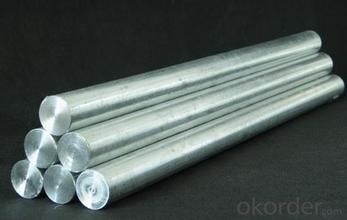
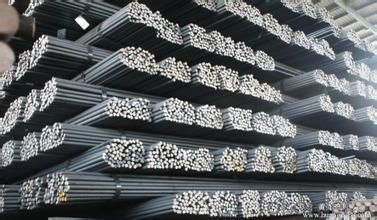
- Q: What are the different surface hardness options for steel round bars?
- Steel round bars can have varying levels of surface hardness depending on the specific requirements and applications. Some of the different surface hardness options for steel round bars include: 1. Soft or annealed: This is the lowest level of surface hardness, where the steel is heated and then slowly cooled to reduce internal stress and increase ductility. Soft or annealed steel is easier to machine and form but has lower strength and wear resistance. 2. Normalized: Normalizing involves heating the steel to a specified temperature and then cooling it in air. This process refines the grain structure and improves the mechanical properties of the steel, resulting in increased hardness compared to annealed steel. 3. Quenched and tempered: This is a heat treatment process that involves heating the steel to a high temperature and then rapidly cooling it in a quenching medium like oil or water. The rapid cooling hardens the surface of the steel, while the subsequent tempering process reduces internal stresses and increases toughness. Quenched and tempered steel round bars have high hardness and strength, making them suitable for applications that require resistance to wear and impact. 4. Induction hardened: Induction hardening is a surface hardening process that involves heating only the surface of the steel round bar using an induction coil. This localized heating is followed by rapid quenching, resulting in a hardened surface layer with increased wear resistance. The core of the steel remains unaffected, retaining its toughness. 5. Case hardened: Case hardening, also known as carburizing, involves introducing carbon into the surface layer of the steel round bar. This is typically done by exposing the steel to a carbon-rich gas or by heating it with a carbon-containing material. The carbon diffuses into the surface and increases the hardness, while the core remains relatively softer. Case hardened steel round bars have a tough core with a wear-resistant surface. These are just a few of the different surface hardness options available for steel round bars. The choice of hardness will depend on the specific application requirements, such as strength, wear resistance, and toughness needed for the intended use.
- Q: How do you calculate the shear strength of a steel round bar?
- In order to calculate the shear strength of a steel round bar, two pieces of information are required: the diameter of the bar and the shear modulus of the material. The shear strength is determined by dividing the maximum load that the bar can endure before shearing by its cross-sectional area. The shear strength can be calculated using the following formula: Shear Strength = Maximum Load / Cross-sectional Area To find the cross-sectional area, it is necessary to calculate the area of a circle using the diameter of the round bar. The formula for the area of a circle is as follows: Area = π * (Diameter/2)^2 Once the maximum load and cross-sectional area are known, these values can be substituted into the shear strength formula to determine the shear strength of the steel round bar. It is important to emphasize that the shear modulus is a crucial factor in the calculation process. The shear modulus indicates the material's resistance to deformation and measures the amount of shear stress that the material can withstand before it begins to deform. The shear modulus value can be obtained from reference materials or technical specifications provided by the manufacturer.
- Q: Are steel round bars susceptible to rust?
- Steel round bars are indeed susceptible to rust. Rust is the result of a chemical reaction between iron and oxygen in the presence of moisture. Since steel is primarily made of iron, it can rust when exposed to air and moisture. However, the susceptibility to rust can be reduced by taking certain preventive measures. Steel round bars can be coated with protective layers such as paint, oil, or galvanized coatings to create a barrier between the steel and the surrounding environment, thus preventing or delaying the onset of rust. Regular maintenance, including cleaning and reapplying protective coatings, can further help in minimizing the risk of rust formation on steel round bars.
- Q: What are the different heat treatment processes used for steel round bars?
- Steel round bars can undergo several heat treatment processes to enhance their mechanical properties and overall performance. These processes include annealing, normalizing, quenching, tempering, and case hardening. 1. Annealing involves heating the steel round bars to a specific temperature and then slowly cooling it to relieve internal stresses and improve ductility. It also refines the grain structure, making the steel softer and more workable. 2. Normalizing is similar to annealing, but the steel round bars are cooled in still air. This process refines the grain structure and improves mechanical properties like strength and toughness. 3. Quenching is a rapid cooling process where the steel round bars are immersed in a quenching medium such as oil, water, or polymer. It achieves high hardness and strength by transforming the steel's microstructure into martensite. However, it can also make the steel more brittle, so tempering is often done afterward. 4. Tempering involves reheating the quenched steel round bars to a specific temperature and then slowly cooling it. This process reduces the brittleness caused by quenching and improves toughness and ductility. The temperature and duration of tempering can be adjusted for desired mechanical properties. 5. Case hardening is a surface heat treatment process that increases hardness and wear resistance. Carbon or other alloying elements are introduced to the steel's surface, which is then heated to a specific temperature. This creates a hardened outer layer while maintaining a tough core. These heat treatment processes offer steel round bars a wide range of mechanical properties and performance characteristics, making them suitable for various applications in industries like automotive, construction, manufacturing, and aerospace. The choice of specific heat treatment process depends on desired properties, steel composition, and intended application of the round bars.
- Q: Can steel round bars be used in the telecommunications industry?
- Yes, steel round bars can be used in the telecommunications industry. They are often used for constructing infrastructure such as transmission towers and poles, as well as for cable management and support systems. The high strength and durability of steel make it suitable for withstanding the environmental conditions and load requirements in the telecommunications sector.
- Q: How are steel round bars used in the manufacturing of machinery and equipment?
- Steel round bars are commonly used in the manufacturing of machinery and equipment because of their high strength and durability. These bars are often machined, forged, or rolled to form various components such as shafts, gears, axles, and fasteners. Their uniform shape and consistent mechanical properties make them ideal for providing structural support, transferring power, and withstanding heavy loads in machinery and equipment. Additionally, steel round bars can be easily cut, welded, or heat treated to meet specific design requirements, making them versatile and essential in the manufacturing industry.
- Q: What is the difference between a cold finished and a turned steel round bar?
- A cold finished steel round bar is processed through cold drawing or cold rolling processes, resulting in a smoother and more precise surface finish. On the other hand, a turned steel round bar is machined on a lathe, which removes material to achieve the desired dimensions and surface finish. Overall, the difference lies in the manufacturing process and the resulting surface finish of the two types of steel round bars.
- Q: What is the difference between a solid and a hollow steel round bar?
- A cylindrical bar made entirely of solid steel material is called a solid steel round bar. It is completely filled and does not have any empty spaces inside. On the other hand, a hollow steel round bar is also cylindrical but has a hollow center, meaning there is empty space or a void within the bar. The primary distinction between a solid and a hollow steel round bar is their structural composition and the roles they fulfill. A solid steel round bar is typically used in applications where strength and durability are of utmost importance. It is commonly employed in construction, manufacturing, and engineering projects that require load-bearing capacity. Conversely, a hollow steel round bar is designed to be lighter in weight while still maintaining structural integrity. The hollow center allows for weight reduction while still providing sufficient strength for various applications. Hollow steel round bars are often utilized in industries such as aerospace, automotive, and marine, where reducing weight is crucial for enhanced fuel efficiency and overall performance. Furthermore, the empty space inside a hollow steel round bar also presents an opportunity for customization. It can be utilized to house other components, such as wires or piping, enabling a more streamlined and efficient design. This versatility makes hollow steel round bars suitable for various applications that necessitate both strength and weight reduction. In conclusion, the main difference between a solid and a hollow steel round bar lies in their structural composition and the roles they fulfill. Solid steel round bars are employed in applications that demand maximum strength and durability, while hollow steel round bars offer weight reduction and customization options, making them suitable for applications that prioritize lightweight design without compromising structural integrity.
- Q: Can steel round bars be used in the pharmaceutical industry?
- It is possible to use steel round bars in the pharmaceutical industry. Steel round bars are widely used in different sectors, including pharmaceuticals, because of their strength, durability, and versatility. In the pharmaceutical field, steel round bars can be applied for various purposes, such as producing equipment, machinery, and storage systems. These bars can be utilized to create pharmaceutical manufacturing equipment like mixers, reactors, and centrifuges, which necessitate robust and dependable materials to ensure effectiveness and safety in the production processes. Additionally, steel round bars can be employed in constructing storage systems like racks and shelves, providing a solid and secure solution for organizing pharmaceutical products and supplies. The corrosion resistance and ease of cleaning of steel make it appropriate for maintaining hygienic conditions in pharmaceutical facilities. Overall, steel round bars give the pharmaceutical industry a dependable and cost-effective material choice for diverse applications.
- Q: What are the different types of steel round bar shapes?
- There is a wide range of steel round bar shapes to choose from, each possessing its own distinctive characteristics and uses. Some commonly seen types include: 1. Round: This shape is the most commonly used and versatile for steel round bars. It takes on a cylindrical form and finds application in various industries like construction, manufacturing, and automotive. 2. Square: Square steel round bars feature four equal sides and are often employed when a robust and sturdy form is needed. They are frequently utilized in construction, architectural designs, and machinery. 3. Hexagonal: Hexagonal steel round bars boast six sides, setting them apart with their unique shape. They are often selected for applications requiring high strength and corrosion resistance, such as aerospace, defense, and oil and gas industries. 4. Flat: Flat steel round bars exhibit a rectangular cross-section with flat top and bottom surfaces. They are commonly used when a broad, level surface is desired, as in construction, machinery, and manufacturing sectors. 5. Half Round: Half-round steel round bars adopt a semicircular shape with a flat base. They are frequently employed for handrails, fencing, and decorative purposes. 6. D-shaped: D-shaped steel round bars possess a flat bottom surface and a curved top surface, resembling the letter "D". They are often favored when a sturdy yet lightweight structure is required, such as in automotive frames and chassis. These examples merely scratch the surface of the various steel round bar shapes available. The choice of shape hinges upon the specific requirements of the application, encompassing factors like strength, durability, corrosion resistance, and aesthetic appeal.
Send your message to us
Special Steel Round Bar
- Loading Port:
- China Main Port
- Payment Terms:
- TT or LC
- Min Order Qty:
- -
- Supply Capability:
- -
OKorder Service Pledge
OKorder Financial Service
Similar products
Hot products
Hot Searches
Related keywords
